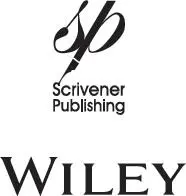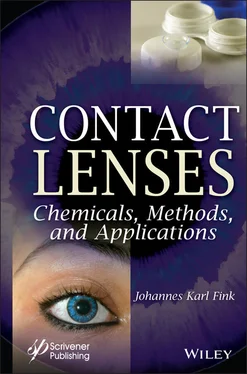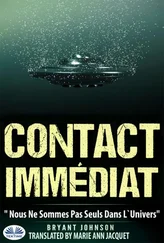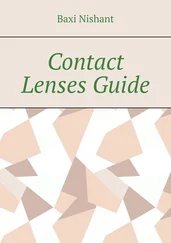Johannes Karl Fink - Contact Lenses
Здесь есть возможность читать онлайн «Johannes Karl Fink - Contact Lenses» — ознакомительный отрывок электронной книги совершенно бесплатно, а после прочтения отрывка купить полную версию. В некоторых случаях можно слушать аудио, скачать через торрент в формате fb2 и присутствует краткое содержание. Жанр: unrecognised, на английском языке. Описание произведения, (предисловие) а так же отзывы посетителей доступны на портале библиотеки ЛибКат.
- Название:Contact Lenses
- Автор:
- Жанр:
- Год:неизвестен
- ISBN:нет данных
- Рейтинг книги:3 / 5. Голосов: 1
-
Избранное:Добавить в избранное
- Отзывы:
-
Ваша оценка:
- 60
- 1
- 2
- 3
- 4
- 5
Contact Lenses: краткое содержание, описание и аннотация
Предлагаем к чтению аннотацию, описание, краткое содержание или предисловие (зависит от того, что написал сам автор книги «Contact Lenses»). Если вы не нашли необходимую информацию о книге — напишите в комментариях, мы постараемся отыскать её.
The book focuses on the chemistry and properties of contact lenses and their fabrication methods.
Audience
Contact Lenses — читать онлайн ознакомительный отрывок
Ниже представлен текст книги, разбитый по страницам. Система сохранения места последней прочитанной страницы, позволяет с удобством читать онлайн бесплатно книгу «Contact Lenses», без необходимости каждый раз заново искать на чём Вы остановились. Поставьте закладку, и сможете в любой момент перейти на страницу, на которой закончили чтение.
Интервал:
Закладка:
342 337
343 338
344 339
345 340
346 341
347 342
348 343
349 344
350 345
351 346
352 347
353 348
354 349
355 350
356 351
357 352
358 353
359 354
360 355
361 356
362 357
363 358
364 359
365 360
366 361
367 363
368 364
369 365
370 366
371 367
372 368
373 369
374 370
375 371
376 372
377 373
378 374
379 375
380 376
381 377
382 378
383 379
384 380
385 381
386 382
387 383
388 384
389 385
390 386
391 387
392 388
393 389
394 390
395 391
396 392
397 393
398 394
399 395
400 396
401 397
402 398
403 399
404 400
405 401
406 402
407 403
408 404
409 405
410 406
411 407
412 408
413 409
414 410
415 411
416 413
417 414
418 415
419 416
420 417
421 418
422 419
423 420
424 421
425 422
426 423
427 424
428 425
429 426
430 427
431 428
432 429
433 430
434 431
435 432
436 433
437 434
438 435
439 436
440 437
441 438
Scrivener Publishing100 Cummings Center, Suite 541J Beverly, MA 01915-6106
Publishers at Scrivener
Martin Scrivener ( martin@scrivenerpublishing.com) Phillip Carmical ( pcarmical@scrivenerpublishing.com)
Contact Lenses
Materials, Chemicals, Methods and Applications
Johannes Karl Fink
Montanuniversität Leoben, Austria

This edition first published 2022 by John Wiley & Sons, Inc., 111 River Street, Hoboken, NJ 07030, USA and Scrivener Publishing LLC, 100 Cummings Center, Suite 541J, Beverly, MA 01915, USA
© 2022 Scrivener Publishing LLC
For more information about Scrivener publications please visit www.scrivenerpublishing.com.
All rights reserved. No part of this publication may be reproduced, stored in a retrieval system, or transmitted, in any form or by any means, electronic, mechanical, photocopying, recording, or otherwise, except as permitted by law. Advice on how to obtain permission to reuse material from this title is available at http://www.wiley.com/go/permissions.
Wiley Global Headquarters
111 River Street, Hoboken, NJ 07030, USA
For details of our global editorial offices, customer services, and more information about Wiley products visit us at www.wiley.com.
Limit of Liability/Disclaimer of Warranty
While the publisher and authors have used their best efforts in preparing this work, they make no representations or warranties with respect to the accuracy or completeness of the contents of this work and specifically disclaim all warranties, including without limitation any implied warranties of merchantability or fitness for a particular purpose. No warranty may be created or extended by sales representatives, written sales materials, or promotional statements for this work. The fact that an organization, website, or product is referred to in this work as a citation and/or potential source of further information does not mean that the publisher and authors endorse the information or services the organization, website, or product may provide or recommendations it may make. This work is sold with the understanding that the publisher is not engaged in rendering professional services. The advice and strategies contained herein may not be suitable for your situation. You should consult with a specialist where appropriate. Neither the publisher nor authors shall be liable for any loss of profit or any other commercial damages, including but not limited to special, incidental, consequential, or other damages. Further, readers should be aware that websites listed in this work may have changed or disappeared between when this work was written and when it is read.
Library of Congress Cataloging-in-Publication Data
ISBN 978-1-119-85735-8
Cover image: Pixabay.com
Cover design by Russell Richardson
Set in size of 11pt and Minion Pro by Manila Typesetting Company, Makati, Philippines
Printed in the USA
10 9 8 7 6 5 4 3 2 1
Preface
This book focuses on the chemistry and properties of contact lenses and their fabrication methods.
The text starts with a chapter in which a detailed history of contact lenses spanning over almost 500 years is presented
Next, common materials that are used for the fabrication of contact lenses are listed and explained, including both the monomers and polymers that are used in their production. Special issues regarding soft lenses, clear contact lenses, and functional contact lenses are also discussed.
Functional contact lenses can be used for remote health monitoring and ocular drug delivery systems. Besides the materials used here, these issues are detailed in further separate chapters. Also, special fabrication methods are discussed, e.g., the fabrication of multifocal contact lenses and the fabrication of ultrathin coatings.
There is also an important discussion on additives that can be used, e.g., for oxygen-permeable materials or anti-biofouling materials.
The chapter ends with a discussion of simulation methods for contact lenes, such asocular topography parameters, gas-permeable lenses, and computerized videokeratography.
In the second chapter, several common fabrication methods for contact lenses are discussed. Here, computer-aided contact lens design, methods for the fabrication of colored contact lenses, and the fabrication of decentered contact lenses are detailed.
Also, special processes are reviewed, including mold processes, reactive ion etching, electrospinning and others.
Another chapter discusses the properties of contact lenses and methods of measurement. Here, a lot of standard methods are discussed. Besides standard methods, other issues are discussed such as the assessment of cytotoxic effects, the Schirmer tear test and others.
A chapter is devoted to drug delivery of contact lenses, a comparatively new issue.
Finally, a chapter details the possible medical problems related to contact lenses and how to avoid them. These are eye diseases, allergic and toxic reactions. Also, disinfection agents that can be used and methods for the medical treatment of such problems are detailed.
The text focuses on the literature of the past decade. Beyond education, this book will serve the needs of industry engineers and specialists who have only a passing knowledge of the plastics and composites industries but need to know more.
How to Use This Book
Utmost care has been taken to present reliable data. Because of the vast variety of material presented here, however, the text cannot be complete in all aspects, and it is recommended that the reader study the original literature for more complete information.
The reader should be aware that mostly US patents have been cited where available, but not the corresponding equivalent patents in other countries. For this reason, the author cannot assume responsibility for the completeness, validity or consequences of the use of the material presented herein. Every attempt has been made to identify trademarks; however, there were some that the author was unable to locate.
Index
There are three indices: an index of acronyms, an index ofchemicals, and a general index.
Читать дальшеИнтервал:
Закладка:
Похожие книги на «Contact Lenses»
Представляем Вашему вниманию похожие книги на «Contact Lenses» списком для выбора. Мы отобрали схожую по названию и смыслу литературу в надежде предоставить читателям больше вариантов отыскать новые, интересные, ещё непрочитанные произведения.
Обсуждение, отзывы о книге «Contact Lenses» и просто собственные мнения читателей. Оставьте ваши комментарии, напишите, что Вы думаете о произведении, его смысле или главных героях. Укажите что конкретно понравилось, а что нет, и почему Вы так считаете.












